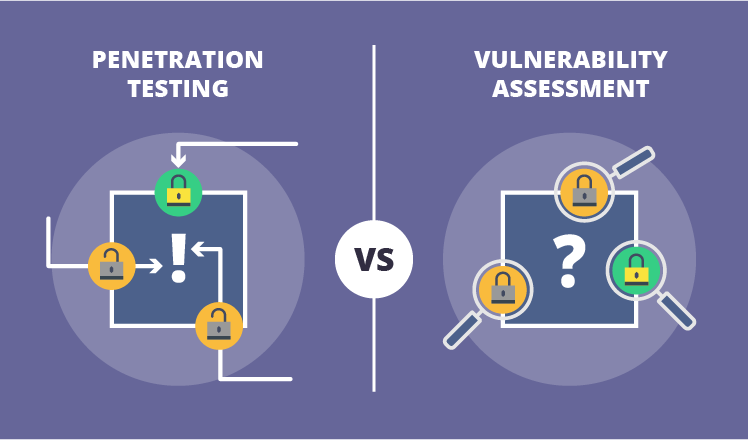
Vulnerability assessment and penetration testing are both important security measures that can help to protect your organization from cyberattacks. However, there are some key differences between the two.
A vulnerability assessment is a process of identifying and evaluating security vulnerabilities in a system. This can be done by using automated tools or by manually reviewing the system's code and configuration. The goal of a vulnerability assessment is to identify potential weaknesses that could be exploited by attackers.
A penetration test, on the other hand, is a more active process that involves actually trying to exploit vulnerabilities in a system. This is done by a penetration tester, who is a security professional who specializes in finding and exploiting vulnerabilities. The goal of a penetration test is to determine whether a system is actually vulnerable to attack and to identify the specific vulnerabilities that could be exploited.
Here is a table that summarizes the key differences between vulnerability assessment and penetration testing:
Vulnerability Assessment | Penetration Testing |
|---|---|
Identify and evaluate security vulnerabilities | Identify and exploit vulnerabilities |
Automated tools or manual review | Actively tries to exploit vulnerabilities |
Less intrusive | More intrusive |
Lower cost | Higher cost |
So, which one should you choose?
The answer depends on your specific needs and requirements. If you are simply looking to identify potential vulnerabilities in your system, then a vulnerability assessment may be sufficient. However, if you want to know whether your system is actually vulnerable to attack, then you should consider a penetration test.
It is also important to note that vulnerability assessment and penetration testing are not mutually exclusive. In fact, many organizations choose to conduct both types of tests as part of their overall security program.
By combining vulnerability assessment and penetration testing, you can get a comprehensive view of your organization's security posture and identify the specific vulnerabilities that you need to address.
Here are some additional tips for choosing between vulnerability assessment and penetration testing:
Consider the size and complexity of your organization: If you have a small organization with a simple IT infrastructure, then a vulnerability assessment may be sufficient. However, if you have a large organization with a complex IT infrastructure, then you may need to conduct a penetration test.
Consider your budget: Penetration testing is more expensive than vulnerability assessment. If you are on a tight budget, then you may want to consider just conducting a vulnerability assessment.
Consider your risk tolerance: If you are willing to accept a certain level of risk, then you may not need to conduct a penetration test. However, if you want to minimize your risk, then you should consider conducting a penetration test.
Ultimately, the decision of whether to conduct a vulnerability assessment or a penetration test is up to you. However, by understanding the differences between the two, you can make an informed decision that is right for your organization.




